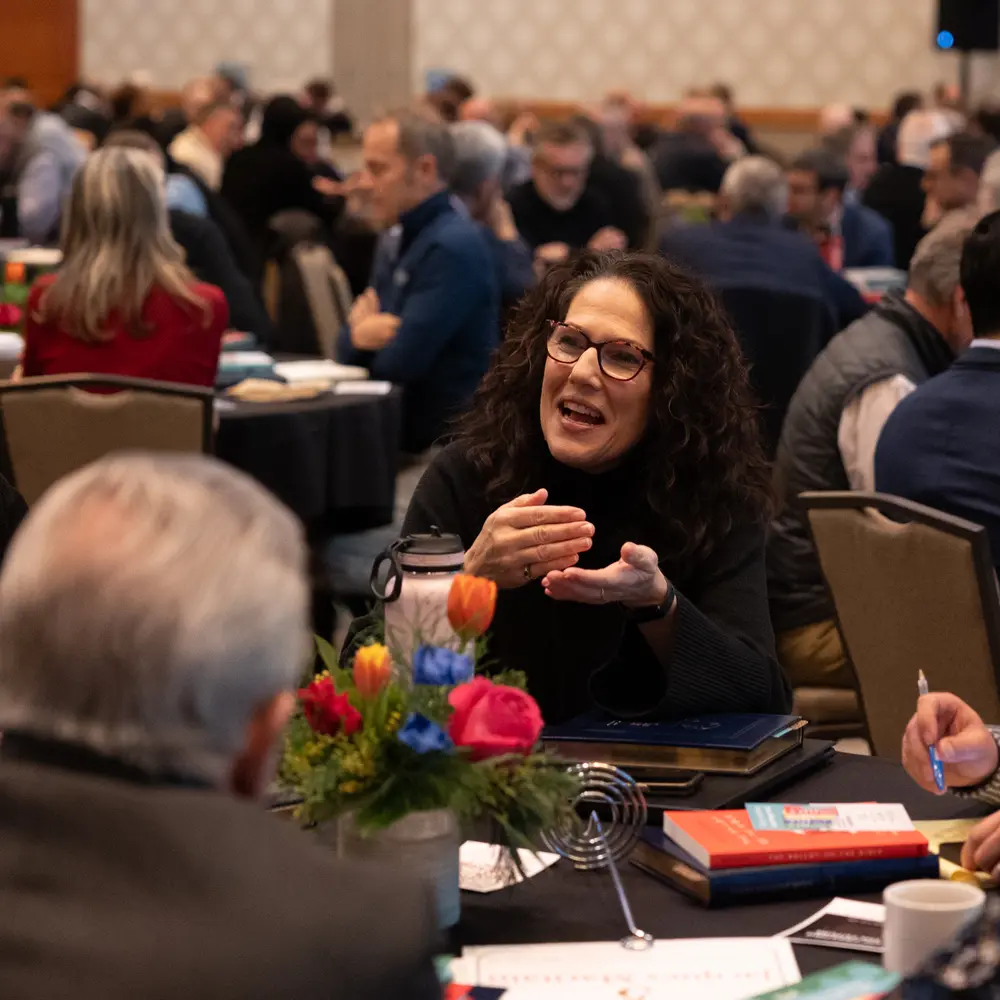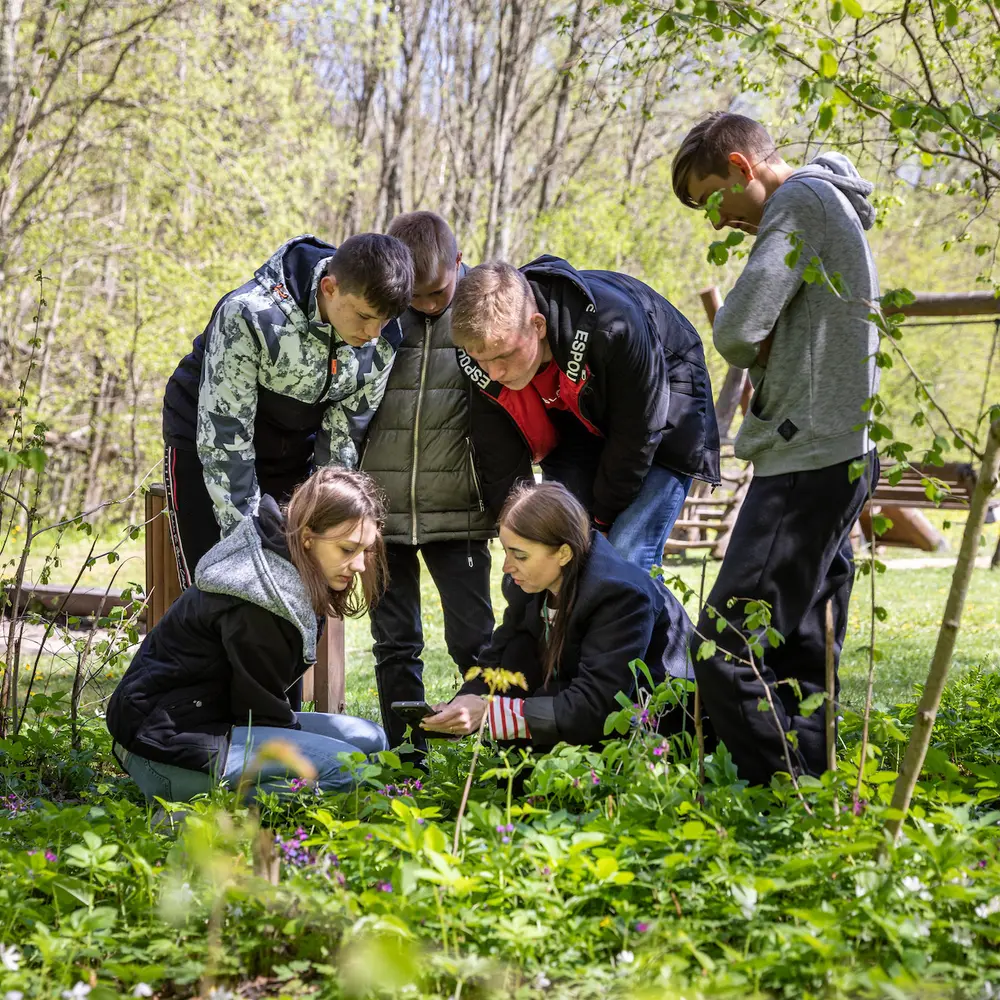Since its founding in 1975, the leadership of the Trust has sought to promote best practices in grantseeking and grantmaking. This piece is a synopsis of some of the counsel and advice that has been compiled and passed on to the nonprofit leaders and foundation peers throughout this time.
Preparation: Do Your Homework! #
The most important component of a successful grant request is preparation. Many projects are creative, imaginative and deserving, but they fail to be funded due to a lack of preparation. It is frustrating for all concerned when a grant proposal is submitted to a foundation before an organization is ready or without the clarity necessary to convey the essence of a project, its value and how it will be achieved.
One key element of preparation is to know the guidelines, restrictions or priorities of the foundation. Does your proposal fit the types of projects that the foundation funds? Are there geographical limitations? Does your financial request fit within the parameters of the mission and prior practice of the foundation? Some foundations fund small requests and limit grants to under $15,000, while other foundations are interested in larger, multi‐ year projects over $50,000. Do your homework, and everyone will benefit!
It is also important to know when to approach a foundation. Some have specific timetables while others do not.
Target Your Application #
Do your research and identify funding sources carefully. Do not use a “spam” approach, sending your proposal to countless foundations in hopes that one will respond positively. Review the websites of the foundations that you are considering. Most foundations have websites that articulate their mission, highlight their interests, detail their requirements, outline the types of proposals they accept and list past grant recipients. You may want to contact a similar organization to yours that has previously worked with the foundation you are considering. This may provide additional insight and clarity as you prepare your proposal.
Remember, there is no such thing as a generic proposal, suitable for submission to any and all foundations. One size does not fit all. Submitting a generic proposal is a sure path to rejection. Successful grants are handcrafted, tailored specifically for a given foundation. It is a form of partnership. Each foundation has its own set of requirements and specific interests. Do not send a letter of inquiry or proposal that does not fit the guidelines. Foundations receive more qualified requests each year than they can fund, so a proposal that does not fit within the stated guidelines will quickly be dismissed.
Follow the Guidelines #
Pay attention to the guidelines, restrictions and funding limits. Foundations have spent a lot of time developing the process and requirements for grant requests. Once again, the requirements are generally set forth on a foundation’s website. Carefully follow the guidelines, which are intended to assist you in forming a clear, concise and worthwhile proposal. If any requirement is unclear, contact the foundation and request clarification. Make sure to address each requirement outlined in the foundation’s guidelines. Failure to address all requirements may cause a delay in the review of your proposal or perhaps rejection without review.
Do not ask for grant support for a project clearly outside the foundation’s guidelines. Creative writing or a clever slant will rarely disguise a proposal and get past foundation staff. It wastes time and reflects poor preparation by you and your organization.
Foundation annual reports sometimes contain examples of grants awarded outside of the stated guidelines. Do not take those as precedents. It may be a test case for a possible new activity or a special initiative that presented itself and warranted attention. It is generally a mistake to believe that you can convince a foundation to grant funding outside of its guidelines. Your time would be better spent preparing a quality proposal and seeking an appropriate foundation.
Have a Plan #
A foundation may decline funding for a proposed program or project if it is not clear how it will be implemented and completed. Take the time to develop clear assumptions and reasoned outcomes necessary for success, including the project’s long‐term sustainability. Foundations usually prefer proposals that are of high strategic importance to the organization. The board and the leadership team of the organization must be together in their thinking. Are you clear about what it will take to be successful and by whom and how the plan will be carried out?
Get a Second or Third Opinion #
When your proposal is finished, it can be helpful to have an outside reader review it to make sure the language is clear and understandable. An outside reader can identify internal assumptions that need clarification. As an organization forms and shapes a proposal, which may take months, it is easy to assume that others understand internal issues, language, vision and direction. An outside reader can save you time and embarrassment by calling your attention to statements that need clarification. It is frustrating to a foundation to receive material that tells little or nothing about the applicant organization, its people or its activities. Even if your organization has a well‐known name, do not assume that this alone will inform a foundation. For example, the Boy Scouts differ from one council to another. Include background information or history to convey what is unique and important about your particular organization.
A common assumption is that a foundation’s staff and board are experts in all areas in which they solicit proposals. While they are accomplished in a variety of areas, they cannot be experts in every field or sector. Avoid jargon, technical language and acronyms accessible only to members of your “inner sanctum.” Write the proposal for an intelligent layperson.
The Importance of the Project Must Shine Through #
One of the most important elements in a proposal is to convey the importance or significance of the project. Too often the importance of a project is confused with its purpose; however, those words are not synonymous. The purpose of a proposal may be to train young leaders in urban settings. But why is that important? What significance will it have in the community and for your institution? You can get caught up in the nuts and bolts of a proposal to the point that you neglect to highlight its strongest selling points. Sometimes the significance of a project is assumed by those writing the proposal because it seems obvious. Do not assume! A proposal may inadequately convey its significance because the applicant has not thoroughly thought through the project, including what happens after the project is completed.
Ask yourself questions like: Will it have a public benefit? Does it build on work being done elsewhere? Does it meet needs that are not already being met? How will we know if we are successful? Explain why the project is so compelling that you are willing to put your time and resources into it. What is the external importance of your project? Obviously, the project has internal importance, but how will it benefit the public? How will the project be sustained long‐term? How many people will be affected? These are questions that foundations discuss when making funding decisions, so provide clear answers that will highlight your proposal’s importance.
Selling Your Proposal #
In a way, the entire proposal is built around good communication. You are trying to convince a foundation that your proposal deserves funding more than the numerous other proposals they review. Competition is fierce for a set amount of funds, so put your best foot forward. More and more, it is a matter of weighing one worthy proposal against many other equally worthy projects. Foundations continue to reflect on how to best utilize or leverage their limited resources and get the most for their money. Foundations are not in the business of giving away money. They are funding partners, investors and venture capitalists supporting projects that have a high potential to pay off and have the greatest impact on society. They want to see organizations succeed and thrive as they serve their constituencies.
Foundations are realistically aware that your proposal will not singlehandedly save the world or solve a complex problem, so do not overstate your expectations. Instead, highlight how your project will address one or two components of a social need or concern.
Focus on the central issues and avoid flashy designs, showy formats and fancy bindings. Avoid name dropping and letters of endorsement containing glittering generalities by dignitaries or celebrities. Foundations know that often these persons have never seen or studied your proposal.
Endorsements that are important and, in fact, often requested by foundations are those from current or cooperating organizations or institutions that will be a part of the proposed project
Be Concise #
What is the proper length of a proposal? Proposals should be thorough, yet concise and succinct. Answer all of the questions set forth in a foundation’s proposal guidelines, but resist the temptation to be wordy. Edit your proposal carefully and remove redundancies and unnecessary paragraphs. Edit for a consistent tone and a single voice. Although proposals are often formed and shaped by many contributors, the final product should reflect a single writer. Do a final check for accuracy of statements, numbers, spelling and completeness of the application. Your proposal should have a brief cover letter that summarizes the issues, content and significance in a straightforward manner
Assessment of the Project #
Assessment is a necessary and yet often dreaded term. Most professional arenas require some type of assessment or evaluation of programs or projects. It is a means to determine if and how a program or project is meeting expectations, developing as planned, or going astray from the original intent. A growing number of foundations are also requiring some form of assessment from those who receive funding.
It is helpful to include in your proposal how you plan to assess your project. Foundations may require periodic or annual reports that highlight the assessment of the funded program. How will you know if the project is progressing or fulfilling its purpose? What are you learning?
How will it change or improve what you do? While this may be intuitive, it is necessary to articulate some form of assessment for your own purpose as well as accountability to the granting foundation.
Multiple Funding Sources #
Making the determination to seek multiple funding sources can be a double‐edged sword. The applicant may fear that a foundation is more likely to reject a proposal if it looks as if someone else may fund it. Most foundations want to know which other sources you are approaching and what support you are requesting from them. If you have questions about the policy of a particular foundation, check the website or contact the foundation. The Murdock Trust views proposals seeking funding from other sources as a plus. It is helpful for a foundation to know it is not being asked to be the sole supporter of a project. Few foundations will fund a project alone, especially if it is a large one.
Lay out all expected funding in the proposal. How will the applying institution contribute to the project? Will there be local support, if not through dollars, through other means: labor, facilities, materials or volunteers? To what extent will your trustee board contribute to the project? A detailed accounting of support can strengthen a request. Do your own constituencies and board support it?
Budget #
All foundations require a detailed budget along with a narrative. It is vital that your budget make sense and clearly illustrate how the requested funds will be utilized. Do not pad your budget request! Ask for what you need and show how it will be used.
Most foundations will not grant funds for debt reduction, budget relief or programs that your institution has already established. The guidelines provided on websites generally outline these types of restrictions.
Foundation staff are accustomed to reading budgets and can detect padded budgets and hidden funds for budget relief. If your proposal makes it through the review process and is granted, the original requested amount could likely be lowered due to the removal of padded budget items.
Should You Seek a Grant Writer? #
There are pros and cons to hiring a professional grant writer. The pros include a familiarity with foundations, their requirements, helpful language to articulate the essence of your proposal and a professional who can assist you in clarifying your vision. The cons include a style or sameness that is often detected by foundations who read numerous requests. An outside writer cannot articulate the essence of your institution in the same way that an established member of your organization can.
There are a number of quality grant‐writing services and workshops available to assist you in understanding the dynamics of grant writing.
Personal Contact #
Many applicants and potential applicants feel that a face‐to‐face visit with foundation personnel will strengthen their chances. The policy and practice vary among foundations. If these are not articulated on a foundation’s website, consider emailing a request to the selected foundation to determine if a visit would be helpful. Communication never hurts and usually helps!
Foundation staff are often busy with numerous submitted proposals. While they may enjoy having a conversation with you about your idea, it is rarely a must for the applicant and the foundation representative to meet face‐to‐face. If you are in doubt, ask them if it would be best to meet.
After a proposal has been studied and accepted for formal review, a staff member may schedule a visit to the applicant’s organization if feasible or necessary. A staff member of the foundation will have had firsthand contact with the applicant before a proposal is formally presented to the trustees for a decision. If the foundation has questions, it will contact the applicant for clarification.
To Lobby or Not Lobby? #
It is a popular notion that a person from, or working on behalf of, the applicant’s organization should attempt to make contact, or “lobby,” with trustees who vote on proposals. Lobbying trustees rarely has value and in fact may have the opposite result. This is often seen as an “end run” around the outlined procedures or simply as an unnecessary effort. Trustees and foundation staff are accustomed to people lobbying for their cause in hopes of swaying a positive vote; however, this is generally ineffective and may result in a negative response. It is better to put the time and energy into good planning and a well‐thought‐through project.
Expect an Acknowledgement #
Most foundations will notify you by email or postal mail that your proposal has been received. You may be given a timeline for the process leading to a decision on your proposal. Expect to wait. Once again, a foundation’s website will offer helpful information on the process. Trustee meetings are scheduled at specific times to consider proposals. Foundations vary on the number of trustee meetings per year. Generally, it will take months to process the proposal, clarify any outstanding questions, present the proposal to the trustees and receive a decision. Plan well and be patient!
Notification #
When a decision has been made, the applicant will be notified in writing, although informal word may be given prior to the formal letter. The conditions and the amount of the grant will be given, along with directions for the administration of the funds. These obligations and directions will need to be carried out in a timely manner.
If the proposal is declined, do not expect a detailed, specific list of reasons. Decision making requires value judgments and selection among many worthy proposals. Rejection does not mean that your project or proposal was not worthy. Other constraints often prevent an approval.
Should You Submit Again? #
If a proposal is rejected, is it worth a second try? Generally not, if all you do is give a warmed over version of the same proposal. Resubmitting a retreaded proposal is a waste of time. In addition, some foundations require a waiting period before you can submit another proposal.
While foundations generally discourage resubmitting new versions of the same proposal, they welcome new proposals, even from those organizations that have been rejected previously. Declination of an earlier proposal is rarely held against an applicant.
Additional Requests #
If a proposal is approved for funding, can you seek additional funding? It depends on the foundation. Some accept follow‐up grant proposals that allow an applicant to take a project to the next level or develop areas that were discovered during the period of the original grant. Other foundations, however, do not grant follow‐up proposals, but they will consider a new proposal for a different project or program.
The Murdock Trust tends to favor the latter. If an institution has shown positive results from an earlier project, it reflects a competence, responsibility and good management that foundations like to see. Many foundations, including the Trust, generally do not provide continual support of projects their own grants set into motion.
Helpful Questions for Review #
As you prepare a proposal, consider the following questions:
- Have you thoroughly researched the website of the selected foundation?
- Have you selected the right foundation?
- Does the proposal fit within the foundation’s restrictions?
- Have you followed all of the guidelines set forth by the foundation?
- How does your project reflect the mission and strategic direction of your institution?
- What is the significance of your proposal for your institution and the greater community?
- Will your proposal have a public benefit?
- How will you measure or assess the success of your project?
- Is the proposal clear, concise and does it articulate the significance of the project?
- Is your budget free of padding? Is it reasonable?
- How will you know if the grant is successful?
- Will the project be continued? If so, how?
Take the Long View #
Relationships with foundations are increasingly a part of the work and funding of organizations. Understand that foundations are most happy when they see nonprofit organizations thriving, serving and fulfilling their missions to their constituencies. At the Murdock Trust, we believe the fabric of the culture is strengthened when the nonprofit community and all who are a part of it are growing and thriving in the larger communities of which they are a part.
From the writing, wisdom and work of Sam Smith, Neal Thorpe, John Van Zytveld and other program directors of the Murdock Trust. Revised January 2010.
Photo by Kaitlyn Baker on Unsplash
The post Great Grant Writing appeared first on M. J. Murdock Charitable Trust.







